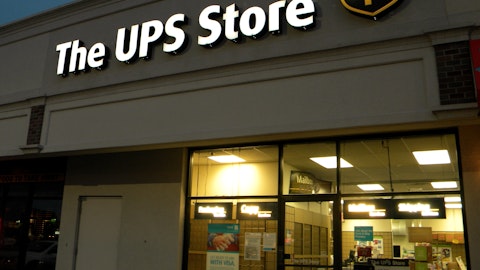Eric Gonzalez: The questions about the cost outlook in the prepared remarks, you talked about margin improvement above and beyond the benefits of moderating food costs. In the second quarter, it sounded like you expanded margins and the Company stores at a much faster rate than it would seem due to some health insurance claims. So I’m wondering if you could comment on your expectations for the Company margin in the back half. Also take you to account the fact that cheese prices have spiked a bit in the last few weeks. And relative to those expectations, those expectations relative to the second quarter, and I didn’t hear this in the prepared remarks, but should we still assume that flat operating margins, uh, this year? Thanks.
Rob Lynch: Right, sure. I mean, we’ve been talking about sequential improvement in our restaurant margins in 2023. I think we shared that in our, first call of the year that we did expect to see that. I think we have even more confidence in that happening as we look towards the next couple quarters and the improvements we’ve seen in our company restaurants. With you the last couple weeks of cheese prices we were really excited about the cheese prices that we saw over the last three months, significant improvement and we have seen that flow through. It has in our company margins have, some of that has been mitigated through some of these kind of health insurance claims. We’re a self-insured company and we had some claims that we weren’t expecting.
And so, that’s not something that we would expect to continue on and so if we can maintain that continued improvement in run rate and efficiency and productivity in our restaurants, we should, despite seeing a little bit higher cheese prices come back through the last few weeks, we should continue to see sequential improvement in our restaurant operating margins.
Eric Gonzalez: Is the flat year-over-year margin still the right way to think about the full year?
Rob Lynch: Yes, I’d say that we’re still tracking towards that.
Operator: One moment for our next question. And our next question will come from Alexander Slagle of Jefferies. Your line is open.
Alexander Slagle: Wanted to just touch on the development ramp and your confidence in this path to the ’23 guidance that you reiterated, and it seems like the first quarter or second quarter openings were below the typical pace we’d expect to get there and realize the external environments certainly not typical, but would be helpful to just gain some more color on what investors can hang their hat on here as it seems like development’s become more difficult for a number of franchise brands, just given the backdrop. So any perspective there’d be helpful?
Rob Lynch: Yes, I mean, development has become significantly more difficult domestically. And I am focused on increasing our domestic development, but one benefit of being disproportionately global contributing to our development is that it’s not as difficult. Globally, we are seeing really strong global development. We have a significant pipeline that gives us a lot of confidence in our ability to deliver the number that we have signed up for. Obviously with the number of units we’ve seen in the front half, we’re going to have to accelerate in the back half. Our team has a lot of confidence that they’re going to be able to see that pulled through. So, that’s why we’re reiterated that guide. I think despite the macro challenges, there’s still a lot of white space for us and a lot of drive, particularly in our international markets to fill up that white space. So we have a lot of confidence in our ability to get between 270 and 310 for the year.
Operator: One moment for our next question. And our next question will come from Andrew Strelzik of BMO Capital Markets. Your line is open.
Andrew Strelzik: The discussion around value is more kind of revenue management focus, but I’m curious how you’re thinking about the approach on more overtly communicated value. I know it’s not an area the brand tends to be particularly aggressive with, but with the deflation, the margin improvements you’ve talked about. Do you see an opportunity to lean in more or how do you think about balancing that? And I guess as you talk about some of the value dynamics, have you seen any change in your customer value perception scores or anything around the metrics?
Rob Lynch: Sure. Yes I think, our sequential improvement in our comps, particularly in the Company restaurants are indicative of our ability to deliver value in a compelling way. So, although, we don’t come out and do a lot of like 50% off discounts, I mean, when you’re selling an extra large one topping pizza for $12.99, that’s a great value. A $7.99 price point for our Papadia is a great value. Our papa pairings, which, we promote every day on our digital channels at $6.99 is a great value. So, we are a 100% committed to delivering value and I think the amount of transaction growth that our system is experiencing right now and has been really for the last three periods getting better essentially every period is indicative of our ability to be very competitive and is value oriented environment.
Operator: One moment for our next question. And our next question will be coming from Brian Mullan of Piper Sandler. Your line is open.





